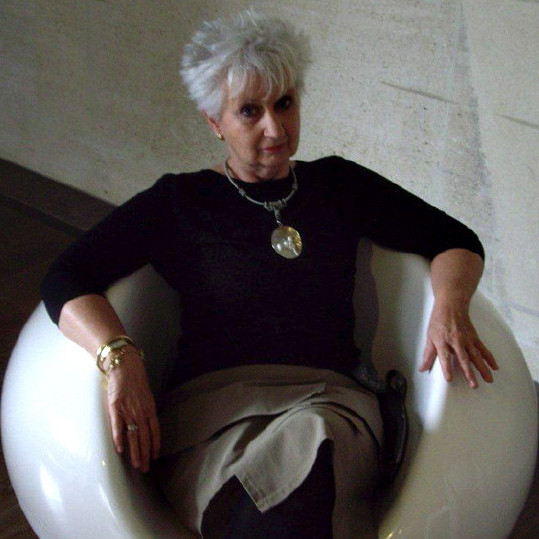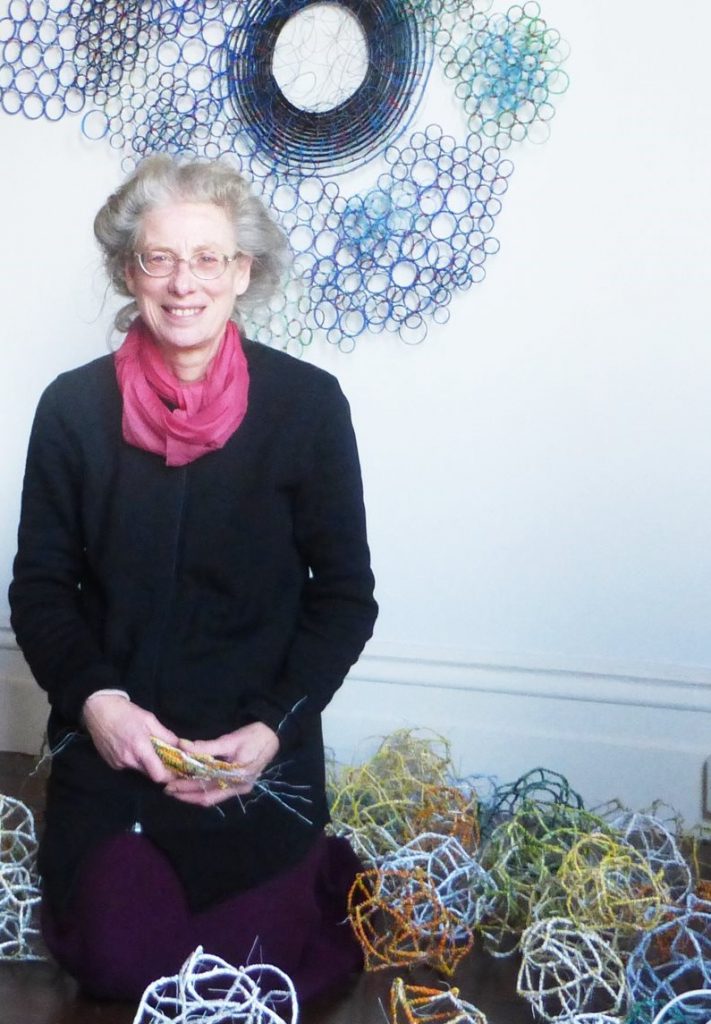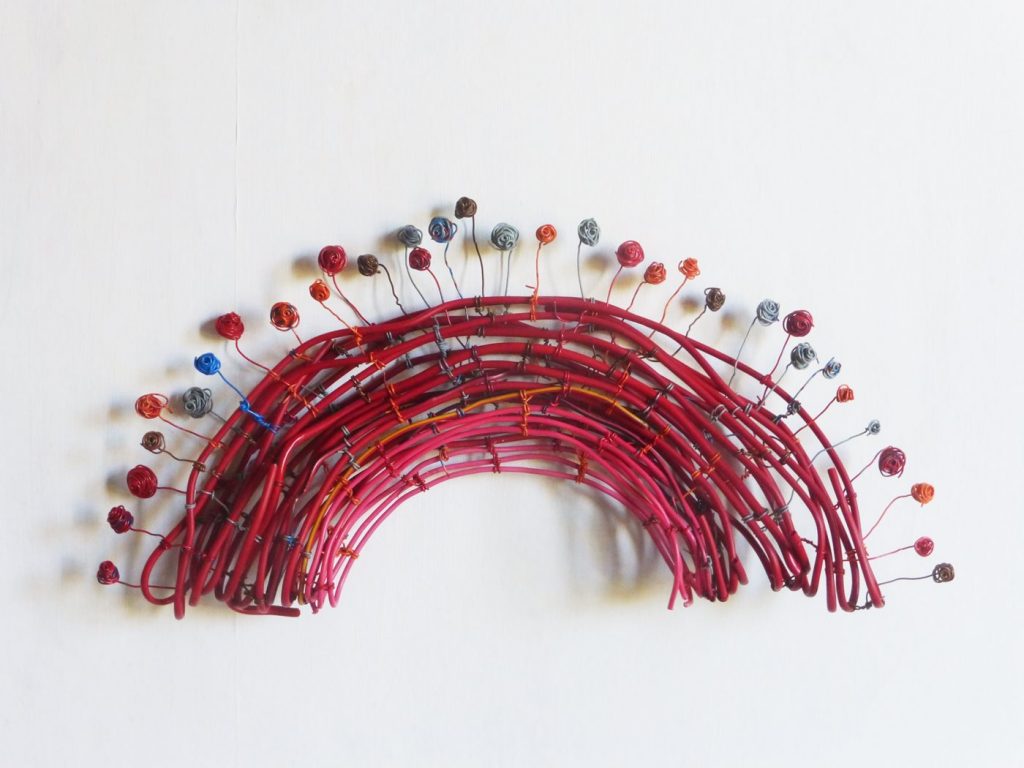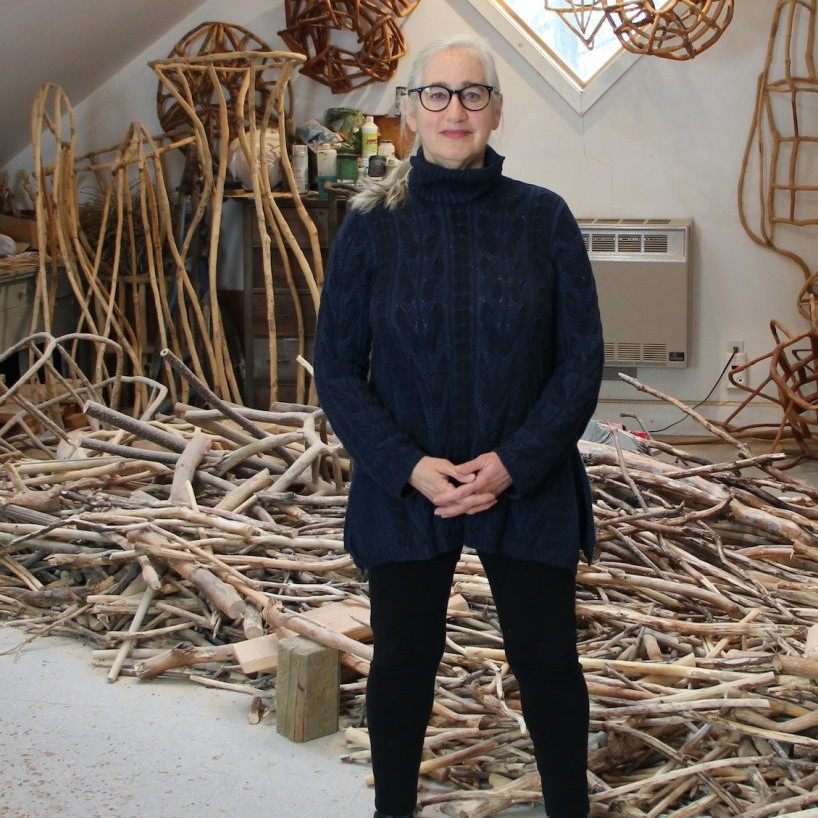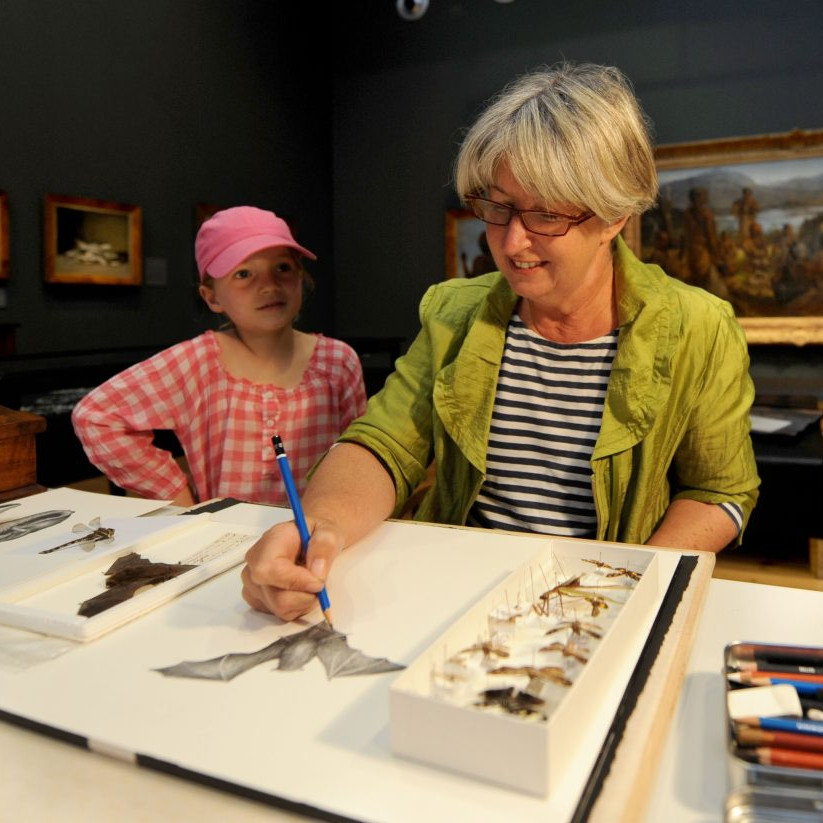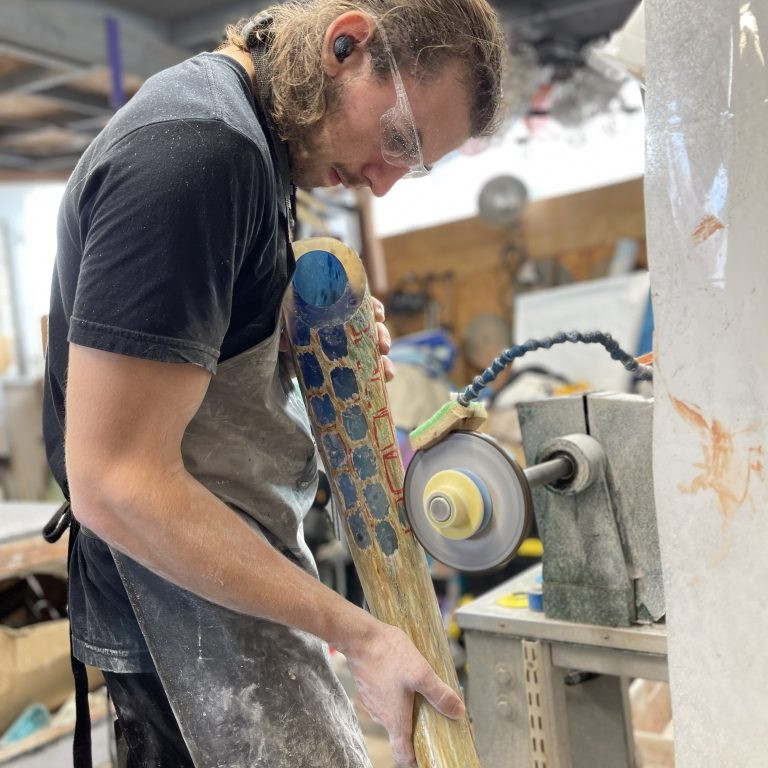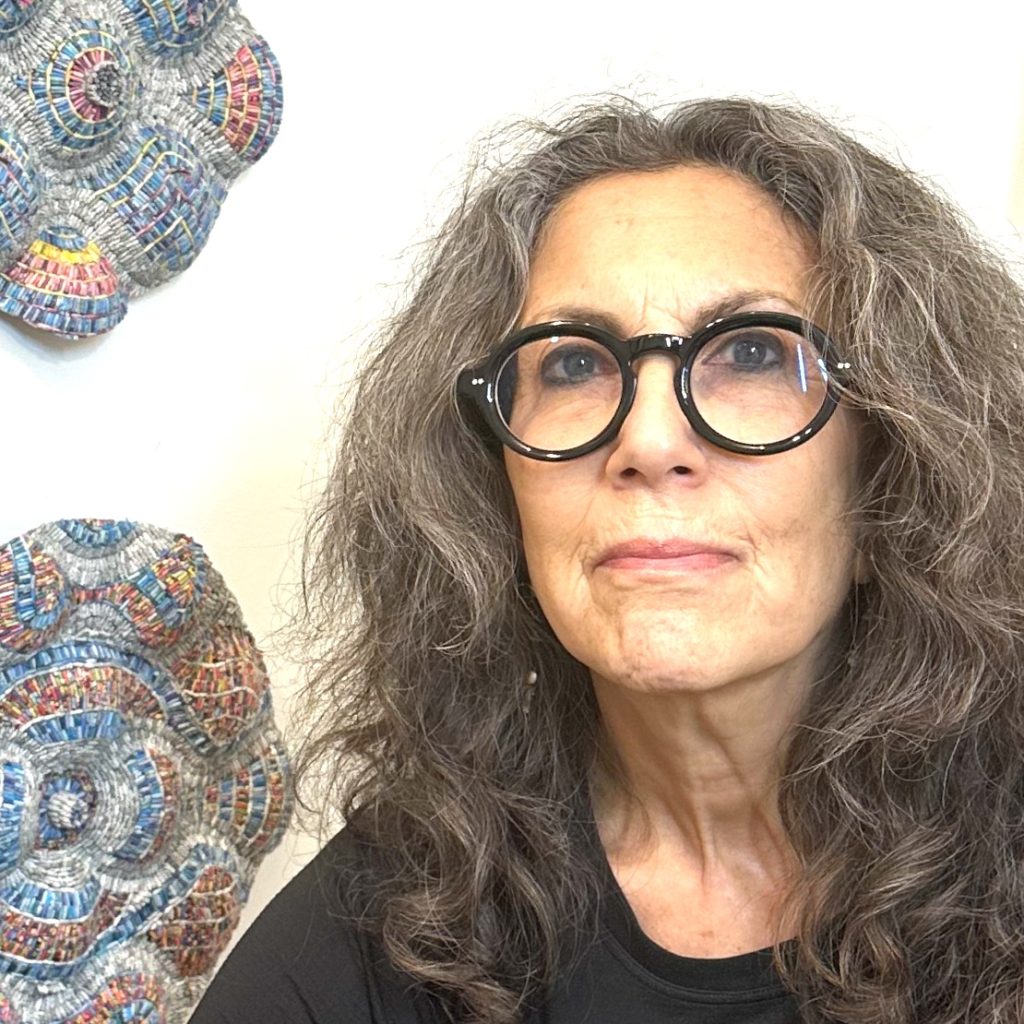Deborah Duffin MRSS Sculptor
The natural world has had a huge influence on your work. How can this be seen in two current works and one from the past.
I began to look at the natural world in the early 1980’s. I primarily see myself as an abstract artist, but I wanted to move away from the architectural forms of earlier work. In 1988 I was invited to create an installation at Unit 7 Gallery, London ‘Wire to Line’,
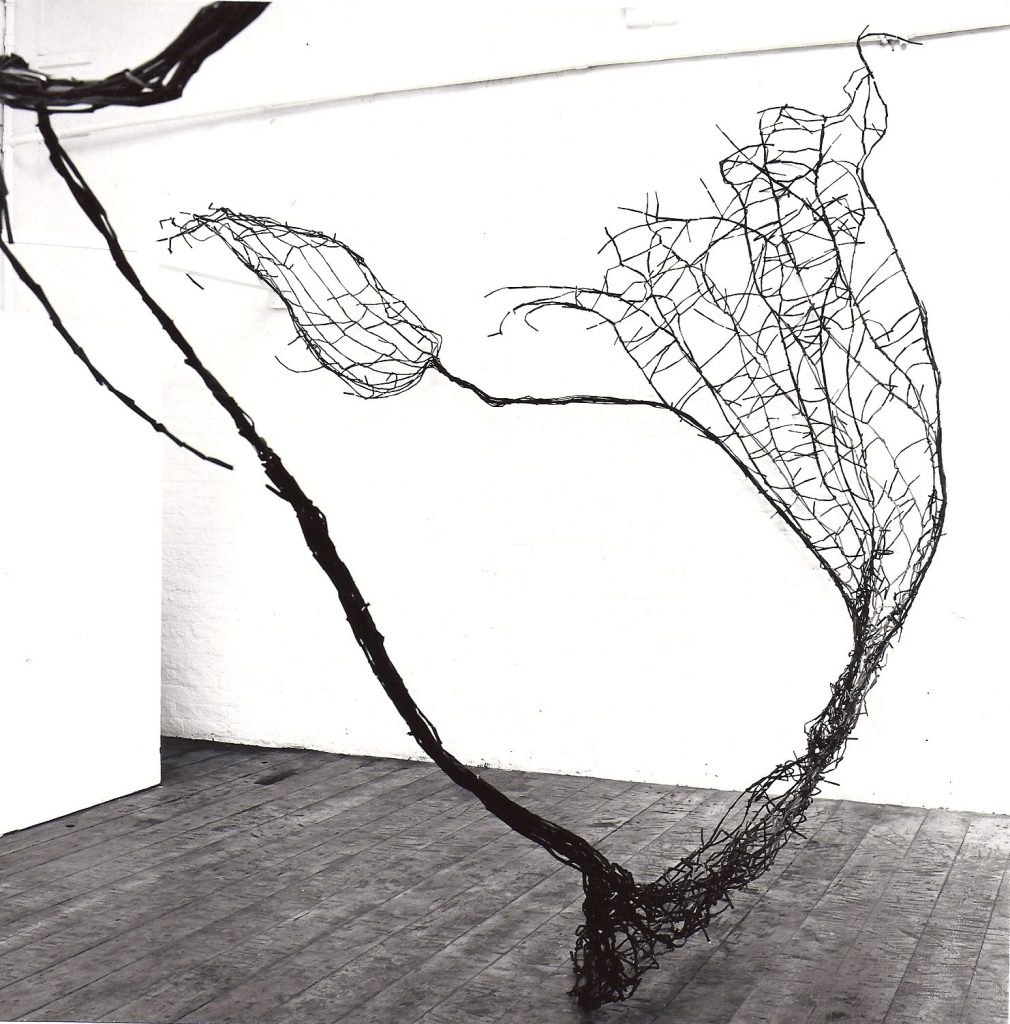
‘Wire to Line’, installation, wire, paper, sellotape.
I had been using fan shapes after making observational drawing of ducks’ antics at dusk on a pond in the park – they created fan shaped water trails as they played. The gallery, situated on an upper floor of an industrial block, was surrounded by winter trees – this also provided inspiration. I wanted to create a three-dimensional drawing that could be walked through. I kept in mind the kind of shapes and forms I wanted, while making several large pieces. These swept through the space and wound round its features – beams, columns and exposed pipes – describing the space and creating a new energy within it.
The rich and fertile subject matter – patterns, rhythms, and energy of the natural world, still inform my practise.
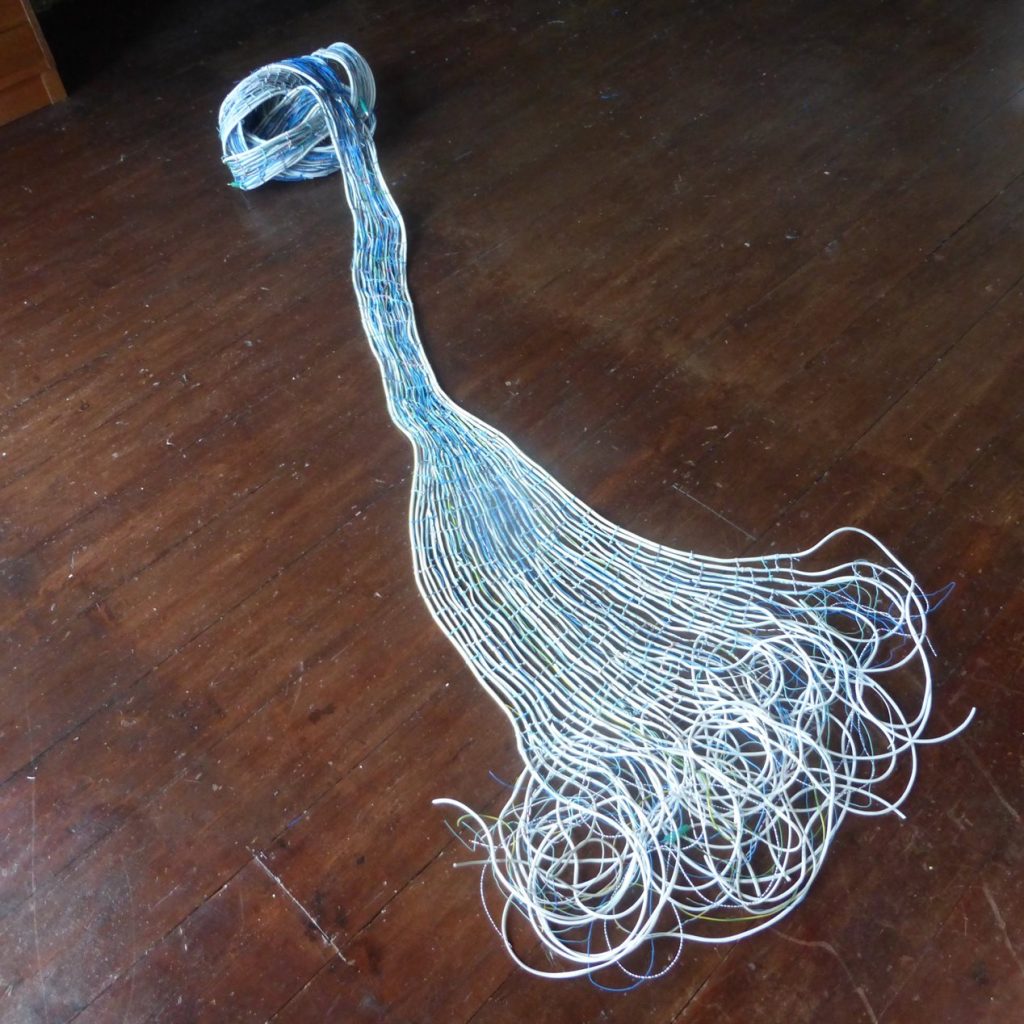
‘Freedom’, wire & cable, 220x90x20cm
One recent piece ‘Freedom’,completed in 2018, aims to emulate tracks, trails and tangles observed in the movements of flying insects, swarms of ants and the slime trails of slugs. It also encapsulates with idea of change and transformation – the way one thing merges into another: an ant’s nest breaks up as they go in search of food, or water changes form as it gets channelled through a rock formation.
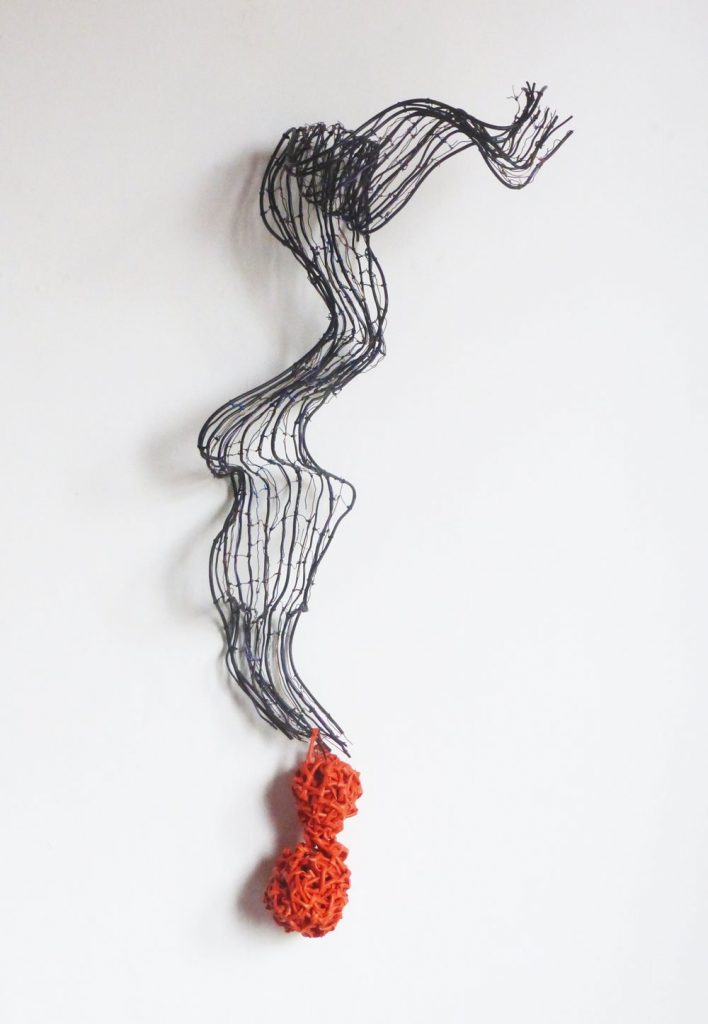
‘Wave and Object’, wire, cable, electrical sleeving, 105x45x32cm
The third piece ‘Wave and Object’, aims to capture the undulating, flowing energy of a wave and its relationship with objects encountered on its way. I hold my observations and experience lightly, and this piece went through many transformations. In the end, the way it worked visually, as a piece, dictated the final result.
You enjoy doing commission work, take one commission and expand on the recent commission…
Who was the commission from?
Liberty Global.
Why it initially excited you.
The company wanted someone who could work with their provided materials – coax cable, fibre cable and electrical wire. I love the malleability of these types of materials and I was excited by the challenge of marrying their desire to highlight the company aims with my wish to be experimental. This was a challenge. I did some research and came up with shapes I felt reflected their ideas and kept these in mind in a fairly loose way. I had a feeling this combination might lead me into new territory, which is exciting.
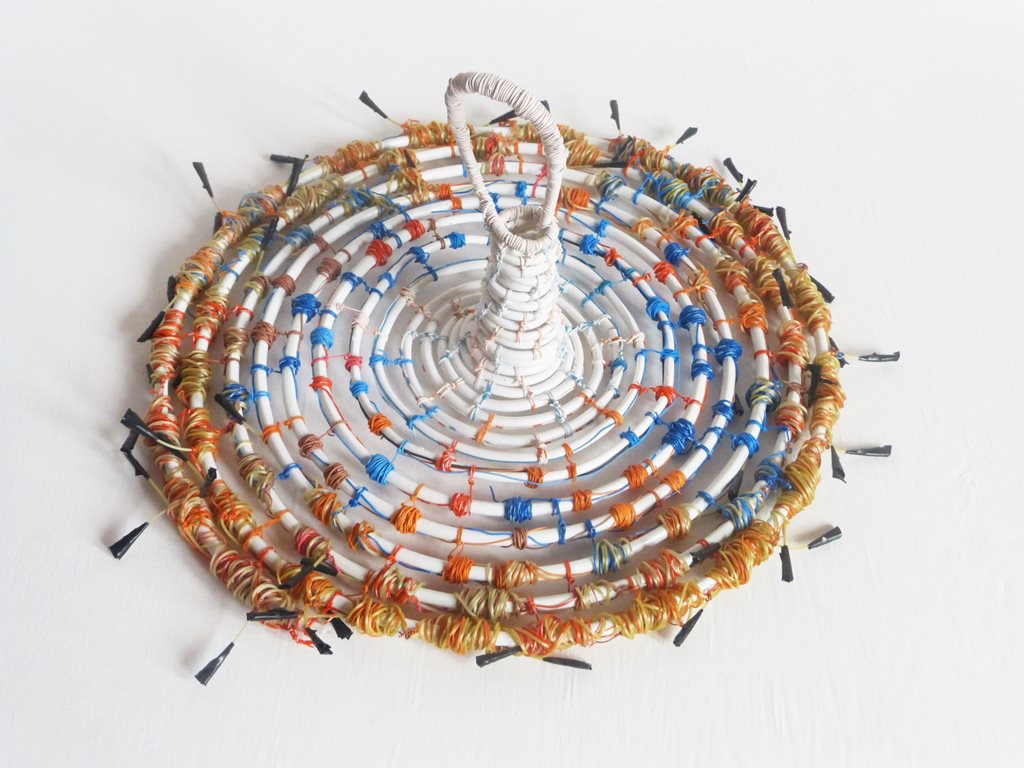
‘In the Loop’, coax cable, fibre, electrical wire, tape, 37x40x18cm
Were there any restrictions?
The only restrictions were that I use their materials and that I encapsulate the aims of their company. They wanted five pieces of varying shape. Apart from that, they were happy for me to decide on the forms the pieces took.
What followed the initial talks and what ideas did you put forward?
I supplied images of previous work I felt related to the kind of forms I had in mind for the commissioned pieces, and I described my understanding of their aims, which they were happy with.
Were the clients involved in the production process?
Only in the sense that they supplied the materials and one of their technicians advised me about safety issues for using the fibre, which I hadn’t used before. Fibre’s internal core is fine glass, which breaks easily and can puncture the skin, so I had to modify the way I worked and how I worked with the material in a visual sense.
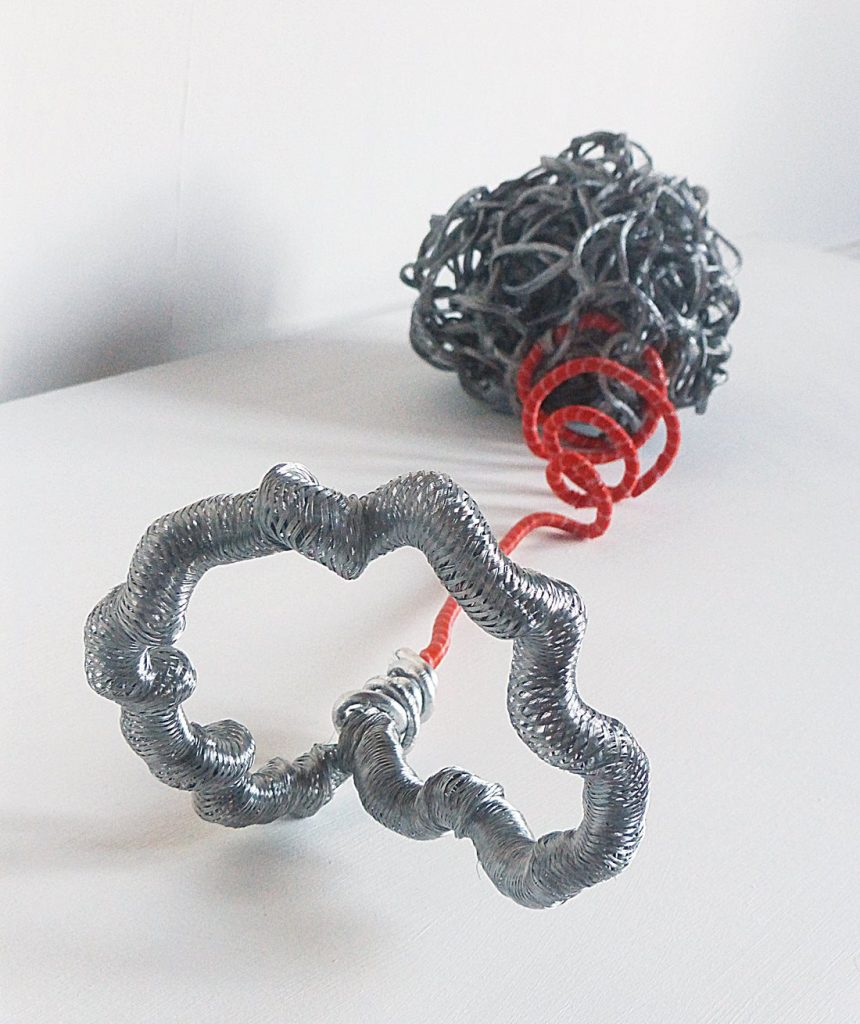
‘Hotline’, coax cable, electrical wire, 52x15x13cm
How was the finished work received?
They were very pleased with the results. My Liberty Global contact said: ‘We absolutely love them! The way you have managed to depict such things in the sculptures is truly amazing.
How did the work fit within the location?
I haven’t seen them in situ. They are in the corporate library at Liberty Global headquarters in London. It is not open to the public, but I am pleased their employees will be able to enjoy the work. I hope it prompts some interesting questions – since the way I use materials would probably be a surprise. I had stripped down the cables and manipulated them in ways that often obscured their origins; most people would struggle to identify the materials used.
Expand on how your work can often be used both inside and outside.
The materials I use are mostly waterproof, often plastic, PVC and wire. So in theory they could all be sited outside (with the exception of a series made with black annealed wire). In practise, there are some I would not site outdoors for various reasons. When I began siting pieces outdoors, there were a few unforeseen consequences: one piece came back infested with tiny insects, which had burrowed up the gaps between wire and electrical sleeving. This meant I had to keep it outside and could not show it indoors in future. Now I take that kind of thing into account in how I make the work and which pieces I think suitable for outdoors. I also think of the colour – pale colours – white, yellow, orange, show up better in a delicate work against foliage etc. For indoor wall pieces, darker colours work better – but I am flexible, and some work in either context.
You often work with architects, comment on some of the highs and lows that come with this work.
I mainly worked with one London architect over many years. He began by buying pieces for his collection; he loved my work and was very supportive. He paid a regular sum each month, so when he had finished paying for one piece, he would choose another and the payments carried on. This was very good for an artist, since income is irregular. He was adventurous and commissioned me to make a piece in the stairwell of his home. I had complete freedom to play with the space, which was exciting. He also exhibited my work, first in the practise he worked for and later in a gallery he created in a practise he jointly set up. I also worked as a consultant to him – introducing him to other artists and helping to set up his gallery – I trained his administrator to run the gallery since I had organised exhibitions and written my book: ‘Organise Your Own Exhibition – A Guide For Artists’. We worked together on selecting artists, offering me an opportunity to look at a wider range of artists and play with how the work might complement each other. I can’t think of any lows to the arrangement – he was good to work for and with.
England is renowned for its gardens and parks how has this included your sculptures?
Many stately homes open their gardens in the summer, and there is a passion for outdoor sculpture parks up and down the country. Some have themed shows and sometimes I enter if my work seems relevant. More often, I am invited on recommendation or the organiser has seen my work elsewhere. My work lends itself to this type of outdoor event since my work appears fragile and delicate, and so a temporary siting seems more possible. In fact, my work is remarkably resilient and has been permanently sited outdoors, for example, at the University of Exeter sculpture trail
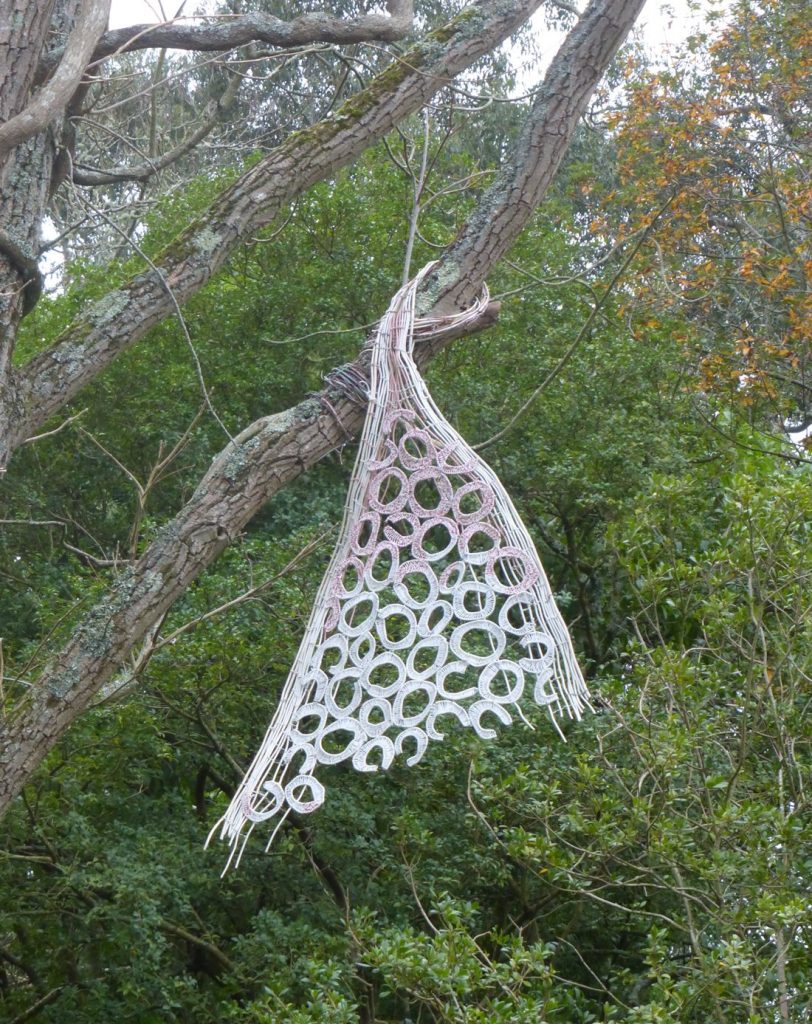
‘White Entwined’, wire, cable, 152x85x22cm
Some of my works are malleable – I may twist them around a tree or reform them to suit a particular place – this is part of the making process – I never consider a piece truly finished unless it is bought or commissioned and has a new owner. The pieces I retain may be changed, and become new pieces time and again.
Some of my works are suspended and turn in the wind, creating an on-going, changing series of relationships. One example was ‘Zephyr II’.
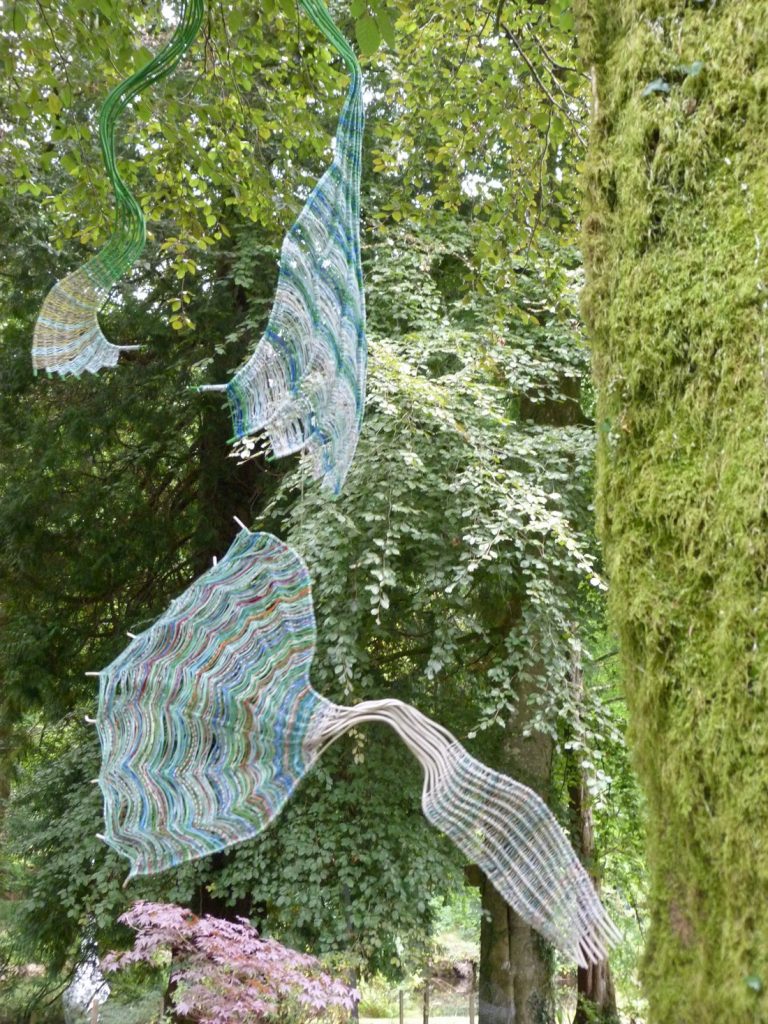
‘Zephyr II’, installation, wire, electrical sleeving
Heathercombe Edge Sculpture trail. Two pieces were suspended within a tree and revolved at different speeds, so that every moment was a new experience. This represents human existence – we appear to take the same routes, make similar decisions and choices –yet every time there are variations to our resulting experiences. The joy of life is in these unexpected occurrences, which if we take notice can affect our future choices and directions.
Take ‘Red Semi Circle with Knots’ and explain two points related to this work.
‘Red Semi Circle with knots’, wire, cable, 38x18x5cm
The technique and materials used.
The materials are collected wire and cable tied together with electrical wire. I initially made this piece as a circle using the electrical wire to tie the larger cable together. As I work, I leave long ends to the electrical wire, so I can use them in ways which the work later dictates (this could be practical – ie to tie something together, or a visual decision, often both). I decided to fold the piece in half and then felt it needed some interesting points. I had used knots in earlier work and thought they would be an interesting contrast to the main body of the piece. It also related to observed wild flowers poking up on a bank or cliff edge – I often get down on my knees to observe or take photographs from unusual angles.
The importance of smaller works.
Smaller works play an important part in the development of ideas. I work regularly – like a pianist practising – and this allows me to try out techniques, textures and shapes in a relatively short time, which I can use at a later date. Some of my large pieces take months or years to make, and I like to have smaller pieces on the go at the same time – I enjoy completing something in a shorter timescale. These pieces are the ones I most often sell – they are more affordable and can be housed on a mantelpiece, shelf or wall in someone’s home.
Why do you think as humans we are so drawn to circles.
Use two pieces to explain this?
I think our attraction to circles is partly because it is such a complete form – simple yet unmistakable. At the same time, it is curvaceous rather than angular. It is a form often seen in nature, and suggests motion and fluidity. It is often replicated in man-made objects as well – bottles, cups, plates – what other shape would be as serviceable? I also often use spheres and spirals, which have a similar feeling. My piece entitled ‘Growth’ has a circle at is centre (although it is actually made as a spiral).
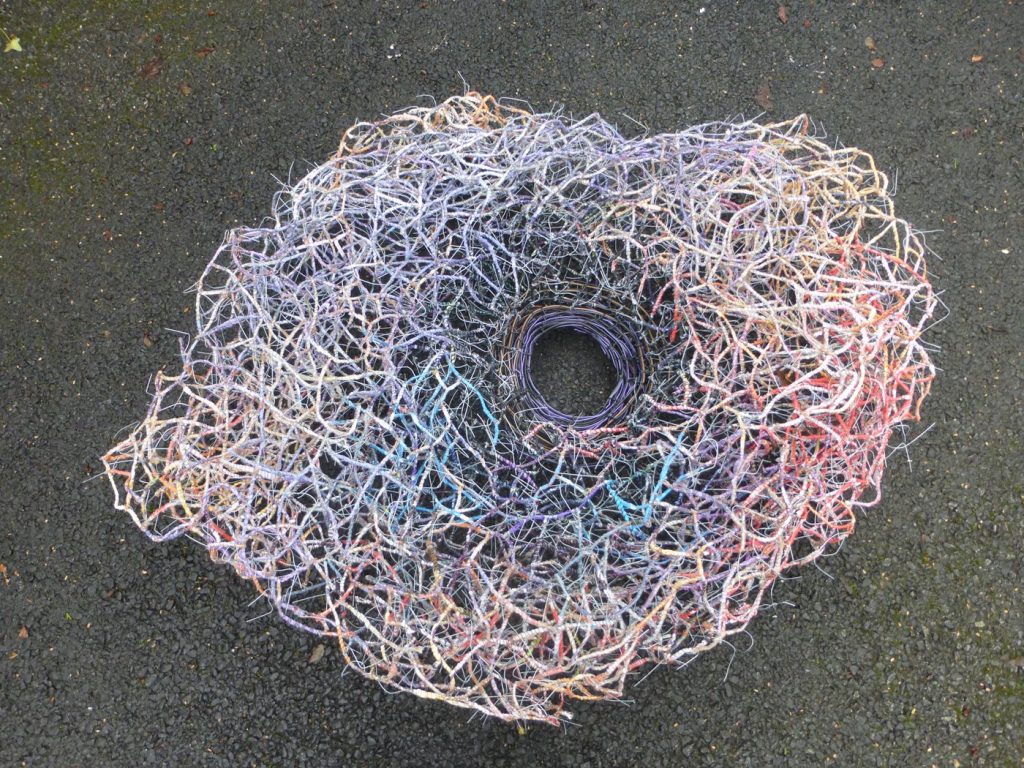
‘Growth’ wire, packaging, 111x88x25cm
It was a starting point in a structural sense – the rest of the form came out of that circle, so it has a practical application. Visually, it provides an anchor, which allows me to be really wild in what comes next – it holds the piece together. I often use this device for this purpose. The circular form draws our attention to the structure of what we are observing in the natural world too, for example, a knot in wood, or water dragged down a hole.
Some of my pieces are made of many overlapping circles, for example ‘Bubble Up II’
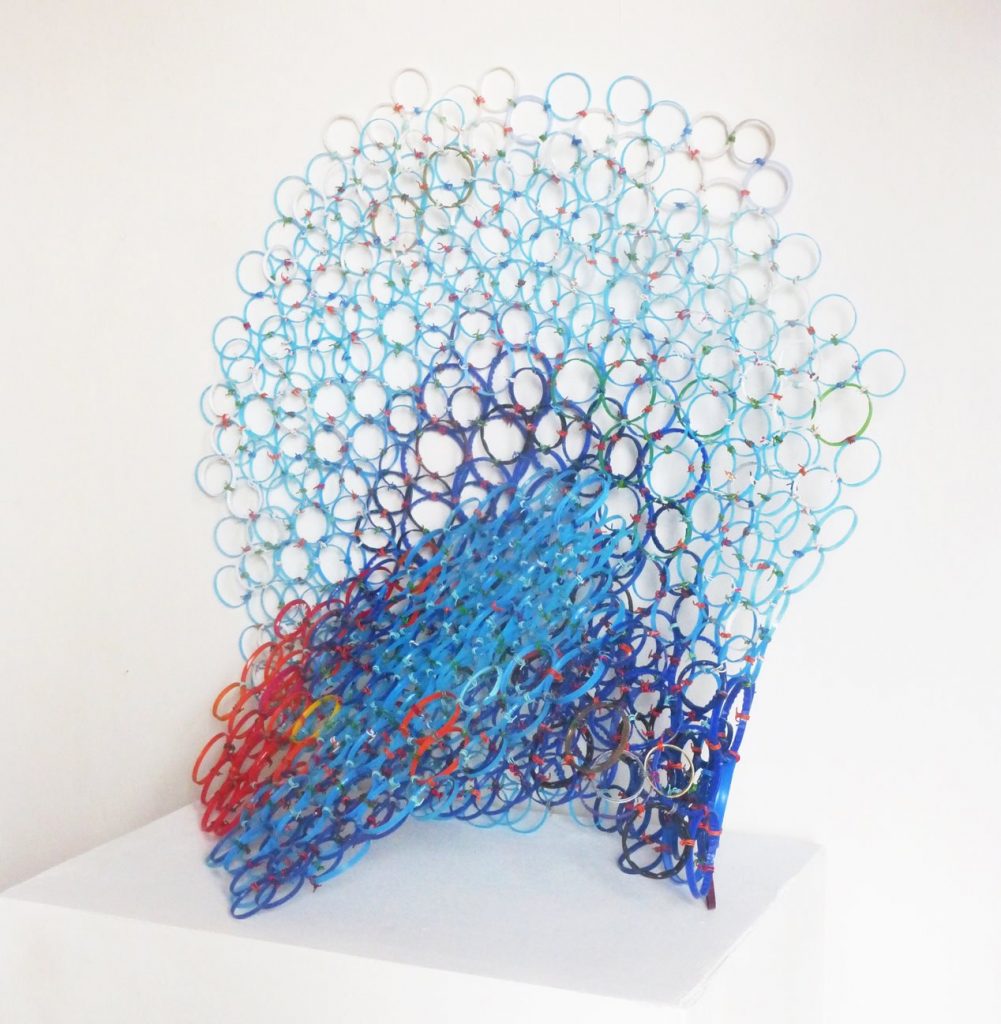
‘Bubble Up II’ plastic circles, electrical wire, variable, this formation 65x57x28.
The idea for stringing the circles together came out of observing turbulent water – from afar it looks wild and irregular, but close up it contains numerous tiny perfect circles of varying sizes (bubbles), which overlap and create layers through which other circles can be partially observed. Many objects, both natural and man-made, are made of multiple circles; this repetition attracts our attention, draws us in and mesmerises our gaze. I collected the circles used in this piece, for years (from drinks bottles) just because I liked them, long before I came up with an idea for using them. They had a useful function in their former life – allowing a bottle to be sealed, then when removed they just become a shape useful for something else.
Your photography work ‘Dandelions at Dusk’ explain the technique you have used for this work.
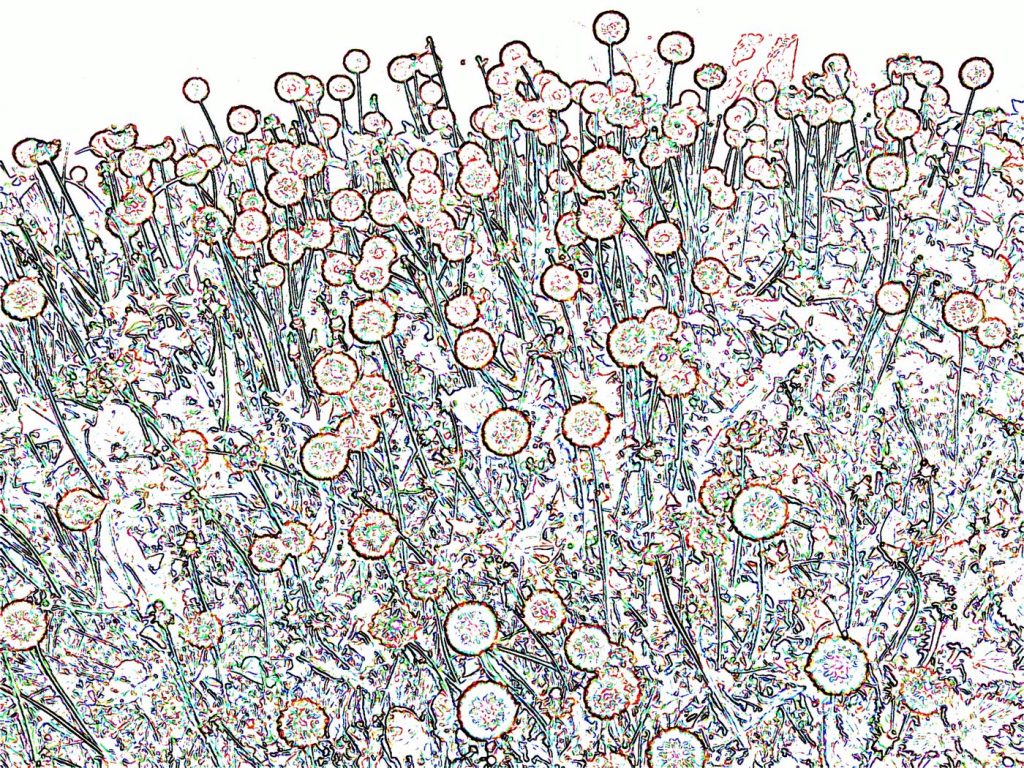
‘Dandelions at Dusk’
This piece was one of a large series of works, which came out of a photograph of a huge bank of dandelion clocks happened upon on an evening walk. I used photo manipulation software to play with the image. I was particularly interested in working with its linear aspects, and creating drawings that exaggerated, elongated and/or distorted the circles of the dandelion clocks. In some pieces, I combined other imagery from different photographs to create interesting contrasts and play with the idea of movement and flux. This particular piece was an early one of the series; I used several features in the software, combined in the one image. The title was just a working title to enable me to keep track of the imagery I was producing, and I probably should have changed it, since I had moved away from the original source -the process had taken me into new territory.
Discuss colour and light in your photography?
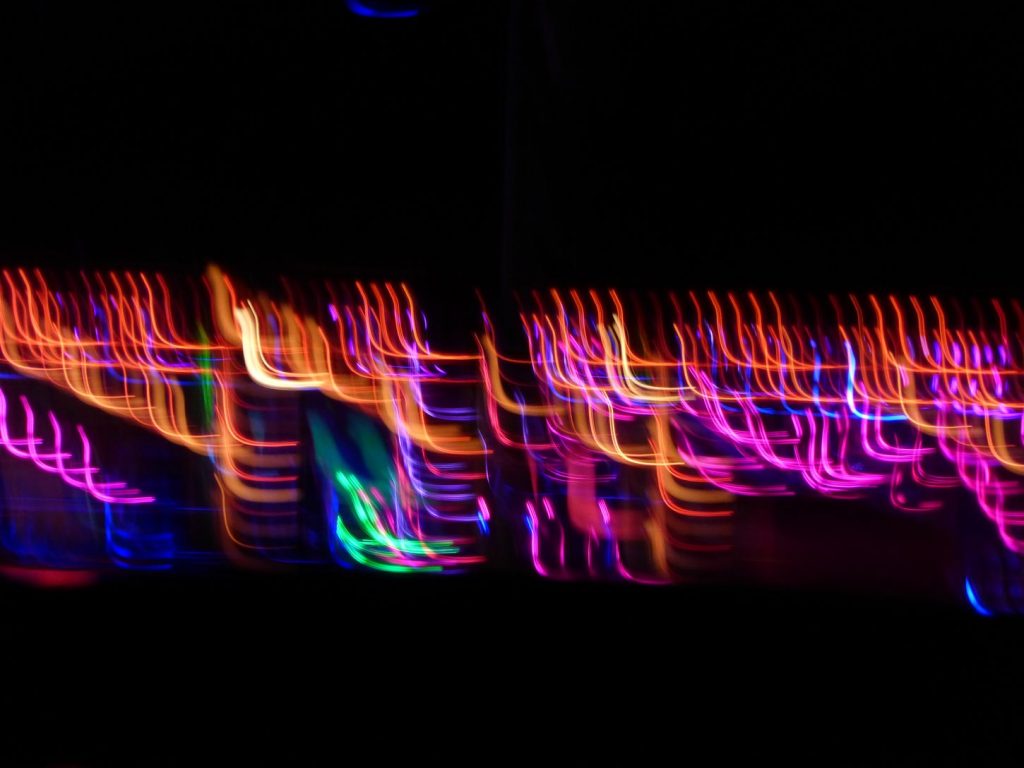
‘Stepping out’
‘Stepping out’ (size variable, as printed) was one image from a series, taken on the same night. The light and colour come from a local funfair. Walking around the fair and experiencing the excitement that grows through the evening had seemed to me to be full of heat and electrifying energy – the colours in this piece represent this experience. In this sub-series, I aimed to encapsulate the jerky movement of walking and create a drawing that expressed my feelings as I moved. I set my camera to take several shots automatically and walked along holding the camera in the direction of the fair. I had no idea what I would capture!
I am attracted by light as a medium, because of its luminescence and intensity. This intensity enables me to portray the heightened feelings that occur when we focus on the energy within us. Drawing with light through the camera and combining this with actual movement and gesture is a way to make physical something we can only feel. The visual result is the physical manifestation of this energy in the same way as the rising wave or the strata of towering cliffs, visually communicate natures activity. The physicality of movement is important in my life – dancing, walking, running. Playing with energy is integral to my work as well as being an important part of the person I am and the way I live.
You have made work for an optician’s window. What did you come up with?
They wanted something eye catching for two windows facing onto the high street in Beverley, East Yorkshire. They were open-minded about the final form, and unconcerned whether the pieces represented their business. They wanted something elegant and stylish. They gave me an advertising brochure, full of futuristic spectacles, which inspired ideas and I came up with one striking abstract form for each window – woven, fan shaped forms made with electrical wire left over from a previous commission. I used pale colours so they would show up in contrast to the interior, which from outside looked dark and shadowy.
You use weaving techniques in your work. When did you introduce this process?
This began with the pieces I made for the opticians in Beverley, East Yorkshire, in the late 90’s (described above). I needed to come up with something that would be resilient, rigid and create the type of fan shapes I wanted. Weaving with lots of short pieces of wire also allowed me to involve my young son. I gave him the task of finding the right pieces from my collection. In that way we worked together for hours – he was fascinated to see the pieces evolve and it taught him about colour and measuring as well as co-operative working. It forced me to be creative and flexible in how I approached working. I was, therefore, able to undertake commissions throughout the years when he was young.
Taking on three very different mediums Sculpture, drawing and photography how have you been able to combine and also separate the work?
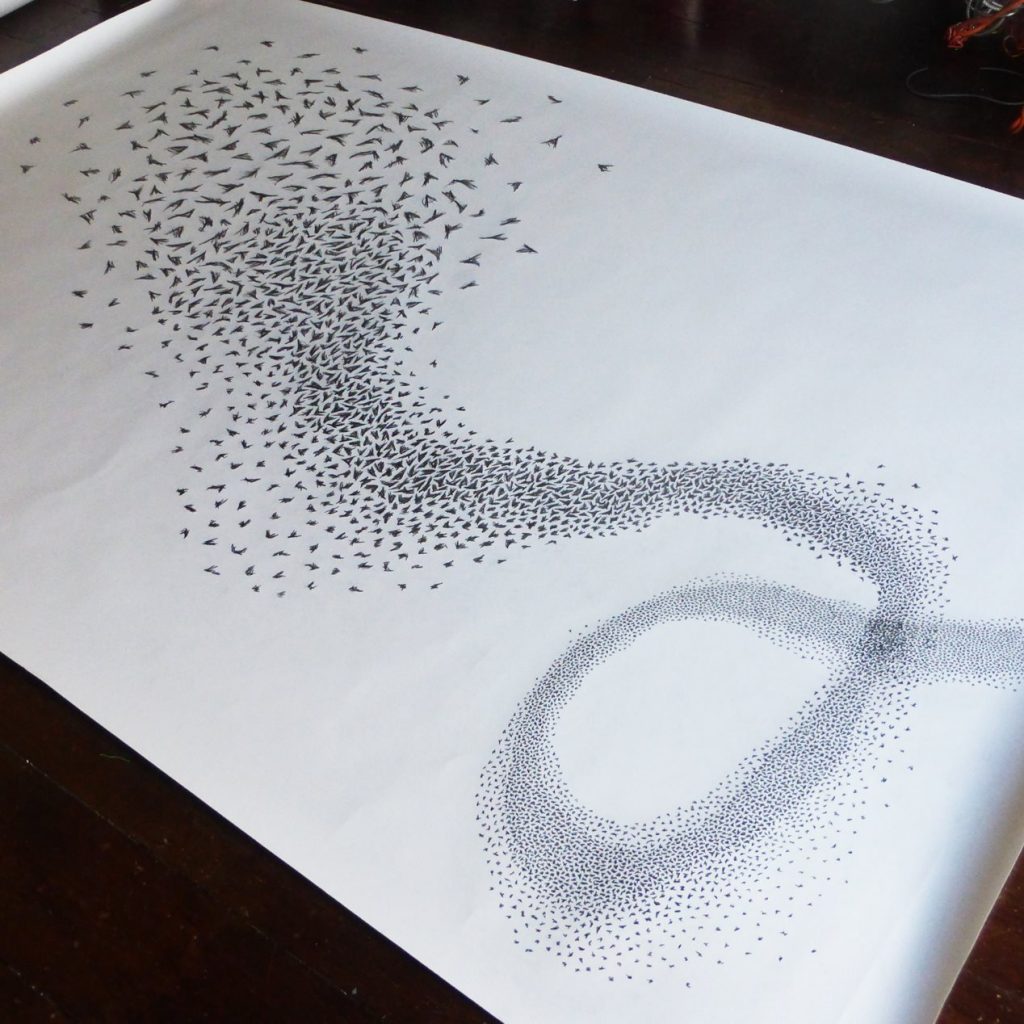
Untitled drawing I, pencil, 2.25 x 1.5 metres
Drawing underpins all my work and is the core of what I do. My definition of drawing is broad: it is not just about using a pencil and drawing lines – although that is part of it. It is also about an attitude – an open-ended, experimental and playful approach. I take this same attitude in all my work. Drawing with traditional drawing materials may include direct observations from life, but also involves experimenting with the action of drawing. Rather than illustrate or record, I aim to get to the essence of what I observe and to encapsulate the feelings I experience while watching, for example, a flock of birds or the rolling sea.
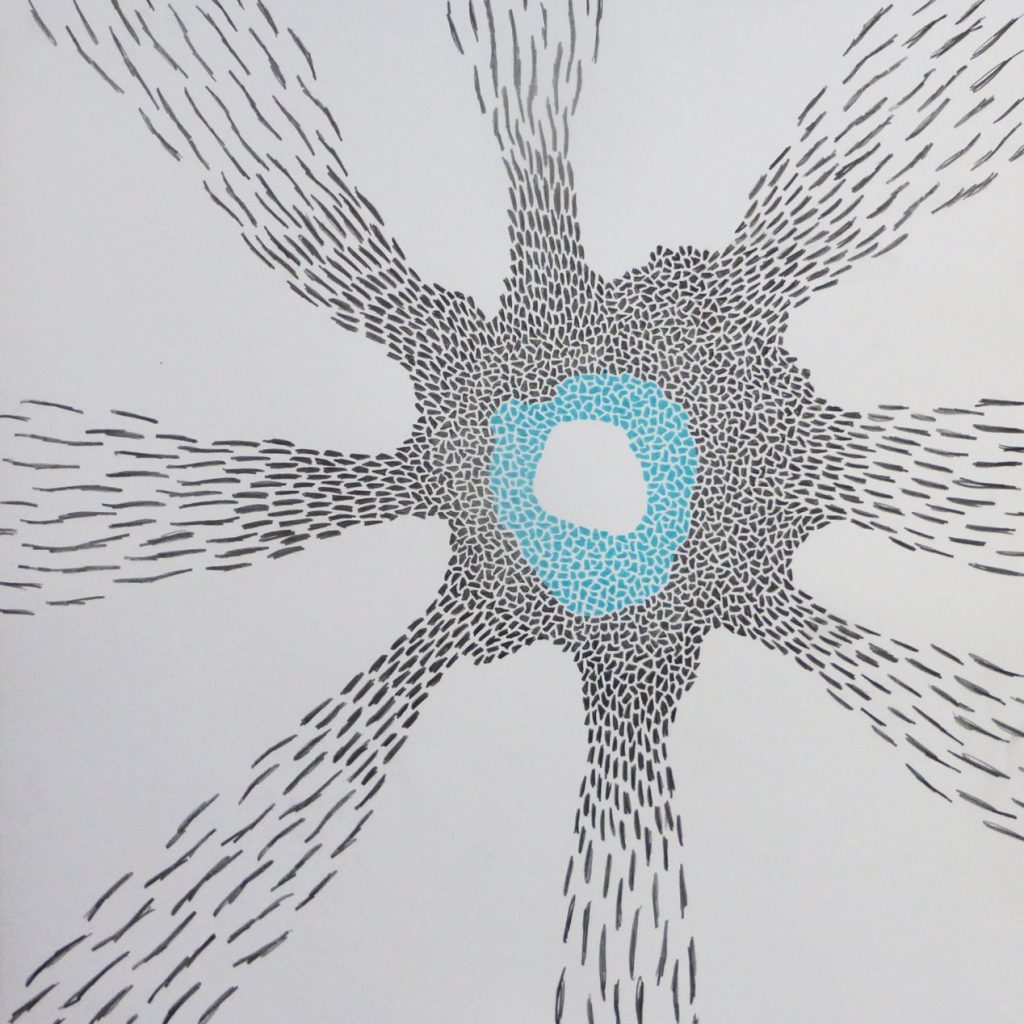
Untitled II, coloured pencil, 50x50cm
As I watch these phenomena, enthralled, I am overwhelmed with the feeling of belonging to their world and yet at the same time I know I am merely an observer.
As I work with any medium, I begin with an open mind, I set up a process and I watch to see what occurs as I am working, I go with this and develop the piece as I go along. It is about developing a relationship with the medium. The outcome of an individual piece is always a surprise to me and I see the way I work as a metaphor for life – each piece a new form of life arising through the combination of the medium, my actions and the experience of observation over many years.
I take the same approach when working with a camera – this is made more possible with the advent of digital cameras and I work with the camera’s features (for example zoom and focus), my own physical gesture and natural phenomena like rain on a windowpane or a firework show. Again, I aim to get right into the essence of subject and medium.
The sculptural work I see as three-dimensional drawings, which enable me to extend into another dimension while retaining elements of the 2D drawings. For some installations, I have combined two or more media in the same piece. At Camerawork, London in 1986, as part of an event:
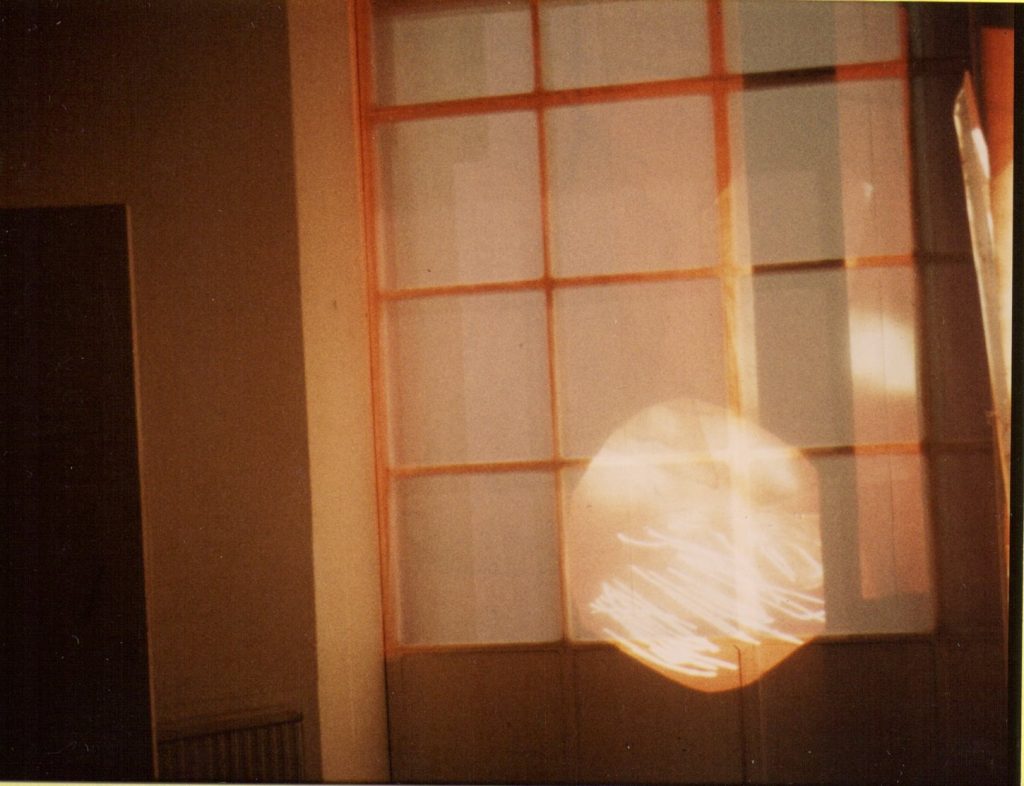
‘Illuminations’ installation, wire, Perspex, light projections
I suspended wire works and found Perspex shapes from the ceiling and projected images onto them as they turned.
I have also combined drawing directly on walls with wire pieces and used light to create shadows and atmosphere.
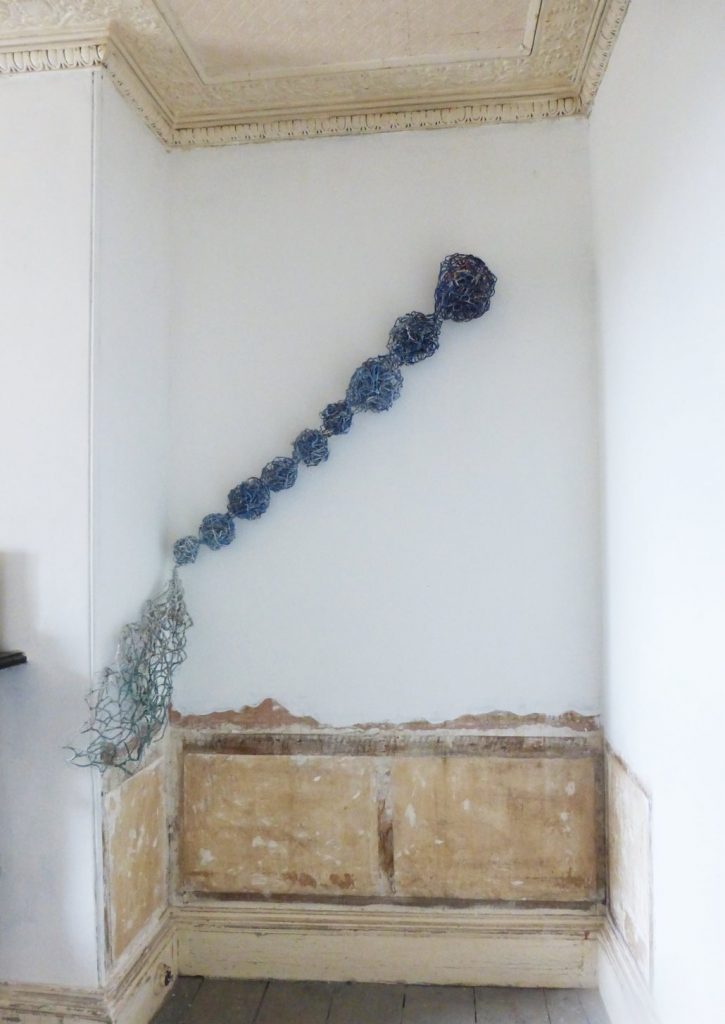
‘Cornered’ (installation, wire, packaging)
The surroundings and features become part of the work and often dictate a new set of decisions as I install a piece or an installation. Cornered’ was one recent example, shown in a mixed exhibition: ‘Presenting Mostly Yourselves’, part of Plymouth Art Weekender in 2018. The curator had selected a couple of pieces. I took them to the site without knowing where they would be placed. A half renovated alcove revealing its history, attracted me. I placed the piece in such a way as to invite the audience to move into the space and share it – only at this point, could the whole piece be seen and its presence experienced close up. The physicality of my work can then be fully lived – the viewer becoming part of the work and feeling a relationship with the building and the work as one.
You use unusual materials in your 3d work – how did this begin?
I am self-taught as a sculptor (I trained as a painter) so I was looking for materials I could use without equipment, experience or knowledge, and that I could manipulate in order to draw in 3 dimensions. I had curated a series of shows at ‘J’ Warehouse, London in 1984, and one of the artists involved, Deb Thomas, was using wire in her work; she kindly showed me some techniques. Another artist I had shown in that event, Lucia Nogueira, became a good friend – we were both looking to move into 3d. We scoured the streets of London together, after businesses had closed for the day and put out their rubbish. This waste supplemented what I bought, and her wonderfully eccentric approach opened my eyes to yet more possibilities.
In 1995 I was approached by British Telecommunications to make a piece from their old telephone wire, to celebrate their change from analogue to digital (I have no images of the piece, since I went into premature labour before it was installed). However, I had also been asked by the Barbican Art Centre to make another version of the BT piece for a solo show in 1996, resulting in ‘Two Fans’ made especially for the space. This experience opened up an awareness of how much we discard and I began to focus more on recycled and found materials.
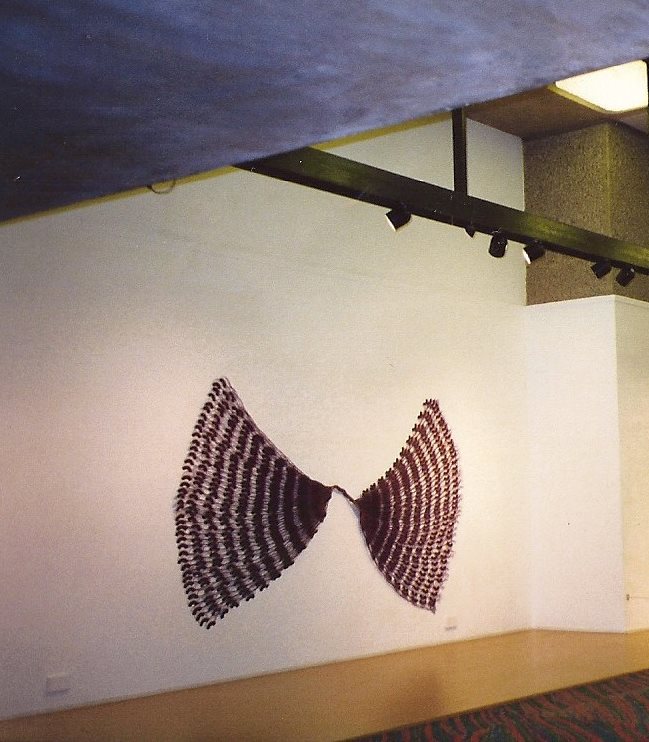
‘Two Fans’ installation, telephone wire, approx. 3x2metres
This chimed with my passion for collecting and with environmental concerns, which had been with me from childhood. I cannot bear to throw something away that might come in handy! I think this comes from seeing my dad keep screws and washers; my mum recycling her own clothes to make things for us children; my aunt squirrelling away string, rubber bands etc. Many things get reused over and over again in my work and my life. The excitement of finding new materials and ways to use them is an integral part of the adventure of making.
Contact details:
Deborah Duffin MRSS
Deborah Duffin MRSS, South West England, UK
Interview by Deborah Blakeley, May 2019
Think a colleague or friend could benefit from this interview?
Knowledge is one of the biggest assets in any business. So why not forward this on to your friends and colleagues so they too can start taking advantage of the insightful information the artist has given?
Other artists you may be interested in:

